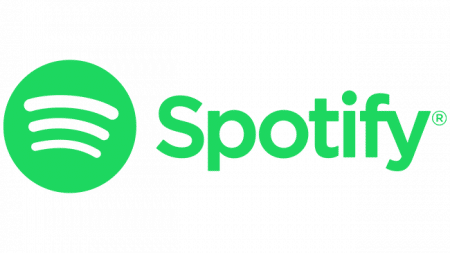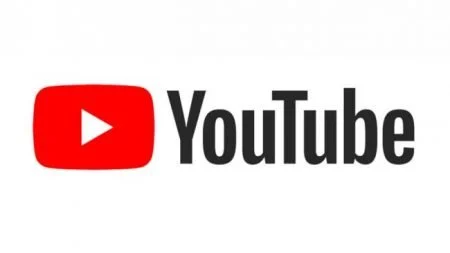Key Code Media’s Inputs/Outputs Explainer | Sponsored by Ross Video
In this episode, we will provide a brief rundown of the latest trends in sports broadcast and live production technology, covering topics such as LED walls, real-time data-driven graphics, video switchers, replay, HDR, SMPTE 2110 and IP-based facility upgrades, camera automation, and more.
Have you been to a new or upgraded sports facility recently? The production capabilities inside sports stadiums and arenas have leveled-up to say the least.
Massive high-resolution LED jumbotron screens now have eye-popping graphics that wrap and engage the entire arena – kiss cams, contests, and of course the game itself – with instant replay, real-time player stats and visually stunning advertisements from sponsors.
As a systems integrator, it has been exciting to be part of these behind-the-scenes changes and updates and see how the new graphics, replay, production switching and processing, and advanced control rooms – much of it enabled by new SMPTE ST2110 IP-based infrastructure – directly impacts the production staff and most importantly the fans, both Live and at home.
Our partner, Ross Video, has been at the forefront of broadcast sports technology, investing heavily in R&D that pays off with relevant products that continue to push the sports industry forward. You can see Ross products in most stadiums, powering video boards encompassing the full arena, custom graphics, dynamically linked content, real-time rendering, and simplifying tasks and workflows that help production teams to accomplish in mere minutes what used to take hours!
In this video, we’ll summarize some of the top Ross Video products for sports stadiums and in-venue productions and what these latest products could mean for advanced stadium production. I’ll also sprinkle in some commentary about our experience with these products in designing, installing, and supporting Ross Solutions across the country.
Ross Video Ultrix Routing & Hyperconverged Infrastructure
You probably would expect us to kick this off with something sexy like cameras, video walls, or graphics, but in my opinion, Hyperconverged infrastructure is the coolest and most important topic we can discuss.
Hyperconverged infrastructure is a software-defined, unified system that combines all the elements of a traditional equipment solution: storage, processing, networking, and systems control and management. There’s nothing television engineers hate dealing with more than cables. With hyper-converged, you combine many parts of the solution that would traditionally be separate servers, purpose-built processors, and other rack space-hungry gear, all inter-connected via cables and signal routing. This new approach enables these functions to be combined into a more firmware/software-based solution approach that utilizes the latest IP-based networking and connectivity in addition to traditional methods. They also reduce weight, footprint, and cabling, shrinking and simplifying the system, making it easier for customers to update and integrate next-gen technology into existing spaces and to reduce the cost of shipping gear between event locations.
In simple terms, Hyperconverged is like a smartphone—it combines all the apps you need into a single software-defined OS-style platform. With something like the Ross Ultrix Router, you’re taking all your signal types and processing them in a single, customized signal management platform—the ultimate problem solver.
A prime example is the traditional need to expand the size of your big SDI, Audio, and other signal routers to accomplish the latest production needs. With Hyperconverged Ultrix routing, you can now support a variety of signal types- SMPTE 2110, SDI, SDR, HDR, MADI, Dante, AES-67, multiviewers, and more in a single box by adding various modular cards, reducing space, cable interconnects, and converters, and a lot of last-minute production headaches.
The Ross Ultrix Router comes in 1RU, 2RU, and up to 12RU solutions. Its performance is rock-solid, and with the hyper-converged setup, you can dramatically reduce rack space and machine room air conditioning needs by consolidating multiple products and functions into one platform.
The latest version of Ross Ultrix includes SMPTE 2110 enhancements. 16 UHD bidirectional Streams per IPX card with SMPTE 2020-7 redundancy, NMOS IS10 security, and super low latency. This is a phenomenal update for facilities looking to go IP.
Ultrix has also added 3D LUT conversion, Dante Audio (one of my favorites), NDI, and more.
A small apparent downside, if you’re using a huge amount of I/O, is that Ultrix maxes out at 288×288 inputs and outputs. But the reality is, with this Hyperconverged approach, many of the previously needed I/O’s for external processing and conversion products disappear. Also worth noting is the concern over the hyper-converged solution, putting all your eggs in one basket, creating a single point of failure – the Ultrix. Ross addresses this, however, by providing multiple levels of redundancy in the product and Ultrix being well known for its extreme reliability.
The Hyperconverged Ross Ultrix is leading the industry with its innovative, compact, and flexible signal routing system. If your goal is to reduce machine room space, have a more “green” approach to energy use, and a platform to easily bring together a diversity of signal types and processes, this is a great solution for your team.
Ross Video DashBoard
Now, we’re going to get into things like graphics, switchers, and cameras, but while we’re on the topic of Hyperconverged and how Ross Video brings everything together to make it easier, we have to talk about Ross DashBoard.
Ross DashBoard is free software that enables you to monitor, control, and program your production technologies in simple-to-use, highly customizable control interfaces. So, why is this important?
Everything we’ll talk about next – Graphics, production control, and camera control – needs a control interface or UI that is ideally uniform in its presentation and operation. These functions, plus many others, are all accessible, customizable, and controllable inside a single Dashboard UI interface. This helps keep your team from having to learn multiple different software interfaces for multiple different products, reducing the chance for errors and frustration while speeding up integration, changes, and operation. And again, all this from a single interface to all aspects of the production.
Ross Dashboard is also highly customizable, streamlining complex workflows in custom control panels, reducing manual tasks, minimizing errors, and making your production operations more reliable and efficient. Dashboard works with Carbonite, XPression, Ultrix, Mira, and various third-party protocols to bring other systems in the control room to the fingertips of anyone inside Dashboard.
Ross Video XPressions Graphics
All new or recently upgraded stadiums are most likely using the Ross XPression suite of products to power their graphics, LED displays, and banners. It’s that simple. Ross has been dominating sports graphics lately, so let’s explore why that is happening.
XPression is Ross’s real-time motion graphics platform. It is an essential part of the broadcast sports experience, becoming the industry standard for eye-popping explosive graphic design, dynamically linked content, and real-time rendering to fill the screens around a stadium.
New stadium designs wrap their entire venue in LED displays with highly custom dimensions, synchronized animations, and attention-grabbing advertisements. XPression, combined with Dashboards’ all-in-one UI, makes delivering these experiences easier.
The latest XPression version 12 introduces enhancements to HDR workflows—the big push in sports workflows today—just in time for the 2024 Olympics this summer. XPression now accepts Adobe Cube files, which allow customers to upload 3D LUTS for a more vibrant visual experience. The Live Input Shader is also getting an update, allowing more features and flexibility within the XPression Engine.
On the XPression hardware side, the new XPression M9 includes an Xeon CPU and an Nvidia RTX 4000 card for improved GPU performance. It features 25% more cores than the M8, nearly 4x more storage in 2RU, and 7x more storage in the 4RU, with 300% more RAM.
The front panel of the XPression server now has new visual alert lighting to inform the user of the status of an XPression system. For example, it can flash red if there is an issue. But way cooler…you can adjust the panels to any RGB color, so your rack room can light up with your team colors.
Moving to software, XPression FX is a new tool for managing and recalling effects. It offers a streamlined file workflow and seamless switcher integration.
XPression Tessera is at the heart of synchronizing all graphics content across all LED screens, wrapping your arena. Tessera’s Distributed Workflow system utilizes a simple region-mapping tool to allow users to slice up a graphic on a large canvas and distribute it across multiple channels or engines for pixel-accurate rendering.
In the studio, augmented reality and virtual sets built with Unreal Engine can help elevate the audience experience. Voyager is Ross Video’s Unreal-based render platform that can put your sports anchor virtually down on the field or just build a killer virtual set. Voyager is linked to XPression via a Datalinq server, which parses data from multiple external sources and feeds it directly into Voyager.
While we’re on studios, I’ll briefly mention Ross’s Lucid Studio, a highly flexible control platform built around an intuitive graphical interface for Augmented Reality, Virtual Studio, or XR Virtual LED Studio environments. Lucid provides seamless integration with tracking systems and real-time 3D rendering engines such as XPression and Voyager.
Lastly, we need to discuss how the Ross team can provide real-time graphical analysis with Piero for your Sports Analytic people. This intuitive and interactive sports analysis platform supports over 20 major sports: 3D telestration, 3d replays, movable and removable players, virtual run, auto-tracking spotlight, and more. All using state-of-the-art custom-branded graphics and even augmented reality effects. And virtual advertisements and sponsorships are possible with all PIERO solutions.
It’s worth noting that Ross also has a creative service team to assist you with producing any graphics elements across all of their graphic products and platforms. Ross Video Rocketsurgery is a creative and professional services team that helps sports teams and stadiums build virtual production and graphics packages optimized to perform on XPression and Voyager systems. You can quickly start that next season with a new graphic package and even offer it to advertisers interested in taking their placement to the next level.
Combine all these graphic products together, and you have a phenomenal suite of products, providing real-time, eye-catching graphical experiences throughout the entire stadium supported by Dashboard for an all-in-one UI for the entire system and a Hyperconverged platform processing all your signals. The Ross story is getting compelling.
Let’s move to Production Switchers, Panels, and Servers controlling this content.
Ross Video Production Switchers, Panels and Servers
Ross Video started as a production switcher company and is known for making some of the most reliable and easy-to-use video switchers, panels, and servers in the world.
Their production switchers come in two models – Ross Ultrix Acuity and Ross Carbonite.
Ross Ultrix Acuity pairs Ross’s flagship Acuity production switcher – designed for large-scale productions and challenging live events – with the Ultrix flexible Hyperconverged routing platform. This future-proof platform combines the signal and format flexibility of Ultrix with the Software-Defined Production Engine (SDPE) capabilities of Acuity, providing base hardware that can grow with simple, cost-effective software licenses. This makes it ideal for vans, OB trucks, and venues by reducing cabling, space, cooling, and maintenance requirements.
The Ross Carbonite is a mid-sized switcher that offers high-end production capabilities at an affordable price. It can handle 1080P60 and 4K productions without expensive upgrades. Each Software-Defined Production Engine (SDPE), installed in either an FR2, FR5, or FR12 frame, provides up to two powerful ME banks and versatile MiniMEs in addition to the powerful routing and processing capabilities of Ultrix.
Carbonite Ultra 60—Introduced in 2023, this expands the system to 60 inputs and 25 outputs in HD or UHD. The latest free software update, Version 9, now has 800 GB of internal SSD storage. There are also configurable clean feeds to every full ME. These updates are free of charge for Ultra 60 owners.
CarboniteCode is a brand-new NDI production switcher for Ross. Code will have the flexibility of NDI but with Carbonite performance, including 30 NDI inputs, 6 NDI outputs, 3 MEs with 6 keyers, 18 DVEs, 3 multiviewers, and a 48-channel stereo audio mixer. It starts at $15k, which is highly compelling. It is important not to confuse CarboniteCode with the other “all-in-one” NDI switchers on the market. The CarboniteCode will require additional products for purchase for things like DDR, live streaming encoders, and a few others. Still, this is a highly affordable way for sports broadcast teams to start using NDI in their production. For example, a sports team could put together a low-cost NDI flypack out in the field that connects back to the Carbonite Ultra 60 back in the Stadium control room.
Ross Video Mosaic Video Image Processor
Regarding controlling your LED wall video processing, Ross’s Mosaic Ultra is a complete redesign of their Video Image Processor for LED and Large Displays. A single instance can process up to 50 million pixels. Combined with XPression Tessera for design, you can make a limitless amount of graphics, canvas size, and shape. And live video feeds can now have incredibly low latency, pixel accuracy, and multiple destinations.
These products can be highly modular in the Ross Video hyperconverged environment. Ross SDPE blades help you slide in necessary I/O, Graphics, and Switcher cards inside the Ultrix Acuity Router. The latest blade is called SDxE, which enables a pool of 3D DVE channels, including Advanced Warp functionality, to be shared system-wide. SDxE Blades can use a Mosiac license to bring video wall processing to your hyperconverged solution.
Of course, when it comes to technical directors and operators, all this horsepower comes down to the buttons on the panel that allow them to switch between sources with transitions in real time.
Ross Touch Drive Panels are built for the largest and most demanding live production environments. They have a familiar layout that operators are already used to using. TouchDrive also incorporates a built-in computer to provide complete configuration and control functionality of the panel, frame, and other connected Ross and third-party devices.
Here’s that Dashboard again. The Dashboard is the underlying venue control system in the most technologically advanced sports and entertainment venues. Combining the keys on a Touch Drive with the ability to quickly access all elements on the Dashboard, your production team has a huge range of flexibility to control the sports stadium environment.
Their latest TouchPanels, the TDx3 and TDx4, have two rows of new buttons with integral displays that follow and show operator input and the exact status of assignment buttons.
Ross MIRA is Ross’s replay product. Based on its current features and price point, it’s going to be popular with many college athletic video departments. There are a few newer replay features that MIRA should consider adding to its products. But knowing the Ross team, they are likely on the cusp of releasing these features in a future update.
Ross Production Cloud is about making all Graphite, XPression, Overdrive, Softgear, and Media I/O solutions available in the cloud. We have a few sports customers using this to allow production teams to operate from home or to bring in talent remotely to operate a show.
Ross Video Camera Motion Systems
While most of Ross Videos’ Camera Motion Systems are for the studio, we thought we should cover them to give the full picture.
The first and most relevant to sports is the SpiderCam. Spidercam broadcast-quality robotic camera solutions are suspended from a cable-driven ‘web’, delivering extraordinary and immersive perspectives for your audiences. While most sports games leveraging SpiderCam are controlled by the production team for the television broadcast, there are a few examples of Stadiums using SpiderCam in-house as a sponsored element of their production. This could take that kiss cam to a whole new interactive level.
Back in the studio. Camera Motion Systems break down into floor-mounted, moving pedestals, and camera tracking.
Ross’s Furio is a floor-mounted camera system. Designed with unique StableTrac technology, Furio+ combines speed and height with power and payload capacity, making it an attractive, versatile rail-based camera system.
Ross’s Cambot pedestal software can now be mapped to the exact dimensions of a room with greater detail. They’re calling it “XY Limits” in the Studio Creator tool. You can set up “keep out” zones to allow robots to move freely and safely in a studio space.
The Vision(ai)ry FT is AI-based facial tracking software for robotic cameras. With the new Vision(ai)ry FT 2.0, they’re now introducing body tracking as well. This allows more consistent framing as your talent walks around a studio space.
ARTIMO is Ross’s latest “previewed” product. It introduces an automated, free-roaming camera robotic system that includes the camera, return feeds, and prompters in a single unit.
Ross Production Services
Lastly, it’s worth mentioning that Ross can help your crew and payroll your sports production team!
Ross Video Production Services helps sports broadcasters with crewing and payrolling staff for their sports, esports, and studio productions. This includes support for flypacks and graphics, up to complete remote operation of control rooms via the cloud.
Ross Video also has their RocketSurgery team, mentioned earlier, that can help put together motion graphic packages
Summary
Thank you for joining us in exploring the trending solutions for sports stadiums. As you can see, the innovations from Ross Video are revolutionizing the industry, providing cutting-edge stadium and in-venue broadcast solutions that enhance the fan experience while bringing the latest timesaving and creativity-generating capabilities to the production team. On top of all these products, Ross support is known for going above and beyond with onsite and remote support. Having the proverbial one throat to choke can be easier than disparate system providers pointing fingers. If you’re interested in learning more about sports solutions from Ross Video or exploring products from our 400+ other partners, please contact Key Code Media. And if you enjoyed this content, don’t forget to like and subscribe to our channel for more insights and updates.




